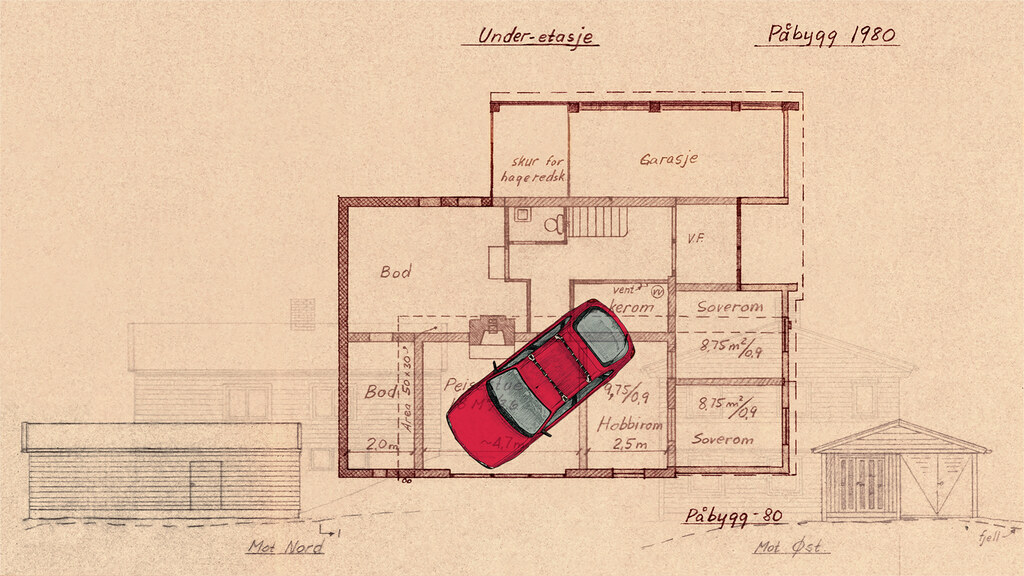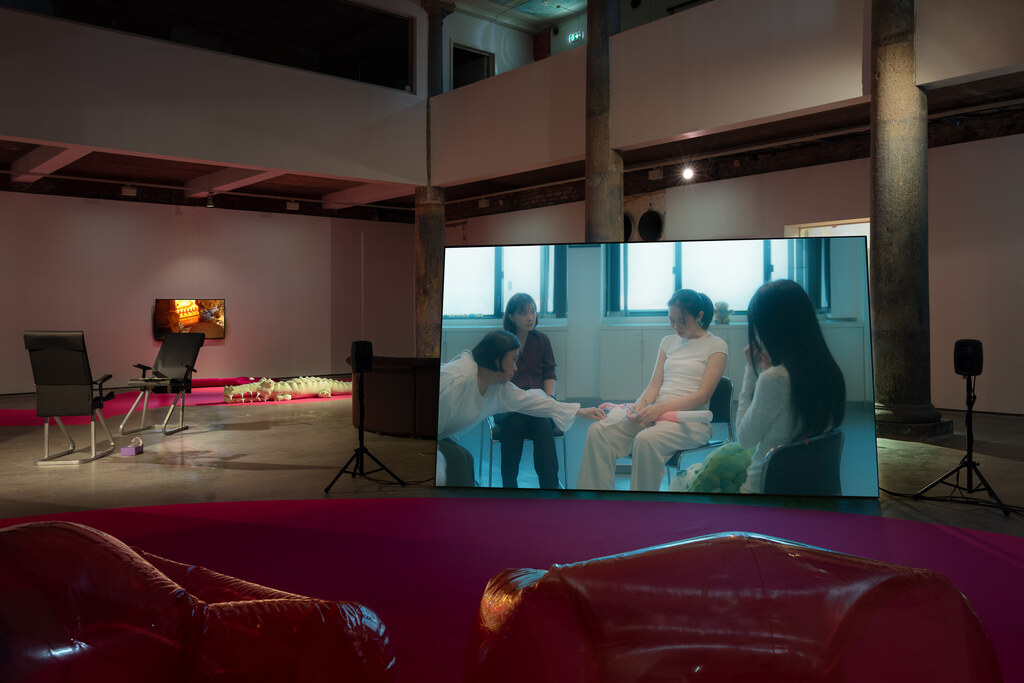Kontakt
- Konstepidemin
- Konstepidemins väg 6
- 413 14 Göteborg
- Sweden
- Hitta hit
- T: 031-82 90 90
- E: info@konstepidemin.se
Tungstenar • Craft Days 2024
— Maria Westmar

In the exhibition ”Tungstenar”, Maria Westmar explores the image of the mountain. A shark tooth forms the basis for her artistic and investigative work on the materials and the stories they give rise to. ”Tungstenar,” along with ”glossopetrae,” are older terms for shark teeth or shark tooth-like stones; objects that we now call fossils.
In 1665, the Danish anatomist Nicolaus Steno travels to Florence, Italy. Here, he becomes part of the Accademia del Cimento, a scientific academy for experimental natural science whose foundation was laid by students of Galileo Galilei shortly before Steno’s arrival. He soon receives the task of dissecting the head of a white shark found in the coastal town of Livorno. The shark is transported to Florence, and in front of spectators, Nicolaus Steno dissects the shark’s head. In the jaws of the white shark, Steno examines its teeth. Remains of seemingly marine animals and plants such as shells, corals, mussel shells, and shark teeth can be found in the mountains around Florence. How is it possible to find something resembling shark teeth enclosed in the mountains when they are located far from the sea, Steno and others wonder. Have they grown inside the stone? Have the shark teeth arisen from dead material? Are the shells remnants of the flood, or are they actual parts of previously marine animals?
Maria Westmar
Starting from the body, Maria Westmar explores how seemingly solid materials and rigid entities can be attributed movement and change by understanding them relationally. Materials play a meaningful role in her artistic work, which, together with the idea, drives the process forward. In her work with stone, textile, sand, and foam rubber, she wonders if they are in motion. Whether the materials are alive or dead and if they have agency.
Maria Westmar lives and works in Malmö. She holds an MFA in Fine Arts with a focus on textiles from Konstfack University of Arts, Crafts and Design. Maria Westmar has exhibited and collaborated in various venues, including Sjöbo Konsthall, Sjöbo (2023), Inter Art Center, Malmö (2022), Krognoshuset, Lund (2019), Kvamsdals Fargeri, Norway (2018), and Zabriskie Point, Switzerland (2017). Her artistic practice has been awarded several grants, including the Swedish Arts Grants Committee’s two-year working grant (2023), Ester Lindahls travel grant (2022), Malmö Art Museum’s grant from the Aase and Richard Björklund fund (2020), Malmö City’s cultural grant (2019), and a grant from the Royal Academy of Fine Arts (2019).
Part of Craft Days 2024
The Craft Days Biennial takes place from May 2nd to May 5th, 2024, with the aim of highlighting, strengthening, and showcasing the field of crafts in the Västra Götaland region.
Art galleries, cooperatives, educational institutions, and artist-driven initiatives come together in a rich program featuring exhibitions, workshops, lectures, and much more. Craft Center is the project leader and coordinates the event in collaboration with Konstepidemin, the Textile Museum, Form & Folk, and Not Quite. Craft Days 2024 is supported by the City of Gothenburg and the Västra Götaland Region.
I utställningen Tungstenar utforskar Maria Westmar bilden av berget. En hajtand ligger till grund för hennes konstnärliga och undersökande arbete av materialen och historierna som de ger upphov till. Tungstenar är tillsammans med glossopetrae äldre ord för hajtänder eller hajtandsliknande stenar; föremål som vi idag kallar fossil.
År 1665 åker den danska anatomen Nicolaus Steno till Florens i Italien. Här blir han en del av Accademia del Cimento, en vetenskapsakademi för experimentell naturvetenskap som studenter till Galileo Galilei har lagt grunden till strax före Stenos ankomst. Han får snart i uppdrag att dissikera huvudet av en vithaj som har hittats i kuststaden Livorno. Hajen forslas till Florens och inför åskådare dissikerar Nicolaus Steno hajhuvudet. I gapet på vithajen undersöker Steno dess tänder. Rester av tillsynes havslevande djur och växter så som snäckor, koraller, musselskal och hajtänder går att hitta i bergen omkring Florens. Hur kommer det sig att det går att finna något som ser ut som hajtänder inneslutna i bergen när de är belägna långt bort från havet, frågar sig Steno och fler med honom. Har dem vuxit inuti stenen? Har hajtänderna uppstått ur dött material? Är snäckskalen rester från syndafloden eller är de faktiska delar av tidigare havslevande djur?
Maria Westmar
Med kroppen som utgångspunkt utforskar Maria Westmar hur tillsynes fasta material och rigida entiteter kan tillskrivas rörelse och förändring genom att förstå dem relationellt. Materialen har en meningsbärande roll i hennes konstnärliga arbete som tillsammans med idén leder processen framåt. I arbetet med stenen, textilen, sanden och skumgummit frågar hon sig om de är i rörelse. Om materialen är levande eller döda och om de har agens.
Maria Westmar bor och verkar i Malmö. Hon har en MFA i fri konst med inriktning mot textil från Konstfack University of Arts, Crafts and Design. Maria Westmar har gjort utställningar och samarbeten som bland annat har visats på Sjöbo Konsthall, Sjöbo (2023), Inter Art Center, Malmö (2022), Krognoshuset, Lund (2019), Kvamsdals Fargeri, Norge (2018) och Zabriskie Point, Schweiz (2017). Hennes konstnärskap har blivit tilldelad flertalet stipendier däribland Konstnärsnämndens tvååriga arbetsstipendium (2023), Ester Lindahls resestipendium (2022), Malmö Konstmuseums stipendium ur Aase och Richard Björklunds fond (2020), Malmö stads kulturstipendium (2019) samt stipendium från Konstakademien (2019).
En del av Craft Days 2024
Biennalen Craft Days går av stapeln 2-5 maj 2024 och arrangeras med syfte att lyfta, stärka och synliggöra konsthantverksfältet i Västra Götalandsregionen.
Konsthallar, gallerier, kooperativ, utbildningar, institutioner och konstnärsdrivna initiativ samlas i ett rikt program med utställningar, workshops och föreläsningar och mycket mer. Konsthantverkscentrum är projektägare och koordinerar evenemanget i samarbete med Konstepidemin, Textilmuseet, Form & Folk och Not Quite. Craft Days 2024 genomförs med stöd från Göteborg Stad och Västra Götalandsregionen.




